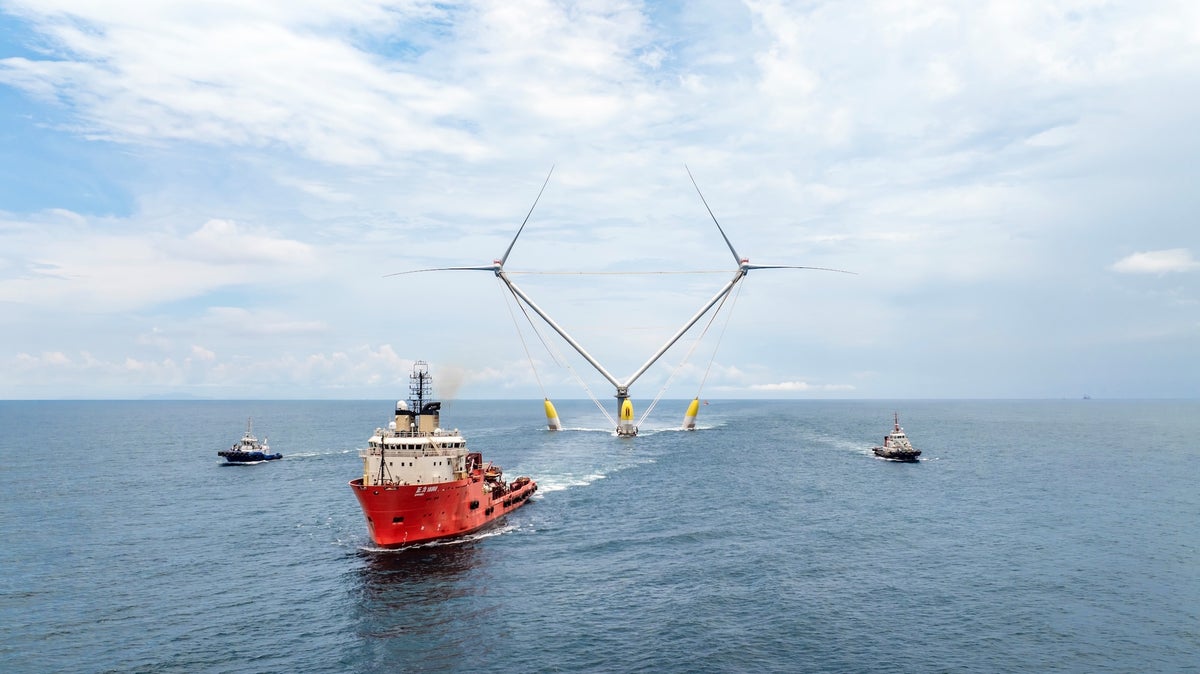In a remarkable leap forward for renewable energy technology, Ming Yang Smart Energy, a company based in southern China, has unveiled plans for a groundbreaking offshore wind turbine that will shatter existing records. This new floating wind turbine, boasting an extraordinary capacity of 50 megawatts (MW), is designed to generate nearly twice the energy of the current world record-holder. The innovative design and sheer scale of this turbine promise to significantly advance the offshore wind industry, especially in terms of cost-efficiency and resilience against extreme weather conditions such as typhoons.
Currently, the largest operational wind turbine is a 26-MW behemoth developed by Dongfang Electric, positioned off the coast of Guangdong Province, China. This turbine is already an engineering marvel, with blades exceeding twice the wingspan of a Boeing 777 and a tower as tall as a 63-story skyscraper. However, Ming Yang’s new design aims to double this capacity by incorporating not one but two sets of turbines—each capable of producing 25 MW—on a single, floating platform. The structure is supported by a distinctive Y-shaped tower and features blades that extend 145 meters each, roughly three times the height of the Statue of Liberty. This twin-headed design builds upon Ming Yang’s earlier 16-MW OceanX turbine, which has been operational in the South China Sea and has demonstrated impressive resilience by surviving multiple typhoons with winds exceeding 150 kilometers per hour.
The motivation behind developing such an enormous turbine is rooted in both economic and environmental imperatives. Since China ceased subsidizing offshore wind farms in 2022, developers have faced increasing pressure to reduce costs while maintaining or boosting energy output. Zhu Ronghua, director of the Yangjiang Offshore Wind Energy Laboratory in Guangdong, explains that deploying larger turbines can significantly lower the overall expenses of offshore wind farms. This is because transport, construction, and installation costs constitute 70 to 80 percent of the total expenditure. By generating more power from fewer turbines, these costs can be substantially reduced. Furthermore, floating platforms enable turbines to be installed in deeper waters, farther from shore, where wind speeds are generally stronger and more consistent, thereby maximizing energy generation.
Floating turbines also offer a crucial advantage in terms of weather resilience. Ming Yang claims that its 50-MW turbine will have a “strong ability” to withstand typhoons, although specific technical details have yet to be disclosed. The existing 16-MW OceanX prototype has proven its durability by weathering several typhoons, largely due to its single-point tethering system. This design allows the turbine to rotate 360 degrees like a weather vane, maintaining balance and minimizing structural stress during high winds. Such a feature is essential for surviving the intense and unpredictable weather patterns common in many offshore locations.
However, scaling up to a 50-MW twin-headed turbine introduces new technical challenges and risks. Umang Mehrotra, an offshore wind analyst at the Norwegian research firm Rystad Energy, points out that the close proximity of the two rotors on a single platform could complicate the smooth generation of power. Typically, turbines are spaced apart to avoid aerodynamic interference, and placing two large rotors side-by-side on the same structure could require innovative engineering solutions to optimize performance. Additionally, the sheer size and weight of the new turbine will demand advanced materials and structural designs to ensure stability and longevity in the harsh marine environment.
Despite these challenges, the potential benefits of Ming Yang’s design are substantial. The company plans to begin manufacturing the 50-MW turbine later this year, with deployment scheduled for 2026. If successful, this model could revolutionize the floating wind industry by setting a new benchmark for turbine capacity and efficiency. The ability to produce more power per unit while reducing installation and maintenance costs would accelerate the adoption of offshore wind energy, which is critical for meeting global climate goals.
The push for larger offshore wind turbines is not unique to China. Western companies like Siemens Gamesa are also engaged in developing bigger and more powerful turbines, reflecting a global trend toward scale as a means to improve the economics of renewable energy. However, China’s focus on supersized floating turbines is particularly pronounced due to recent policy changes and the country’s vast offshore wind potential. As the world’s largest emitter of greenhouse gases, China’s transition to clean energy sources like offshore wind is pivotal in the fight against climate change.
Experts in the renewable energy sector have taken note of Ming Yang’s ambitious leap. Han Yujia

